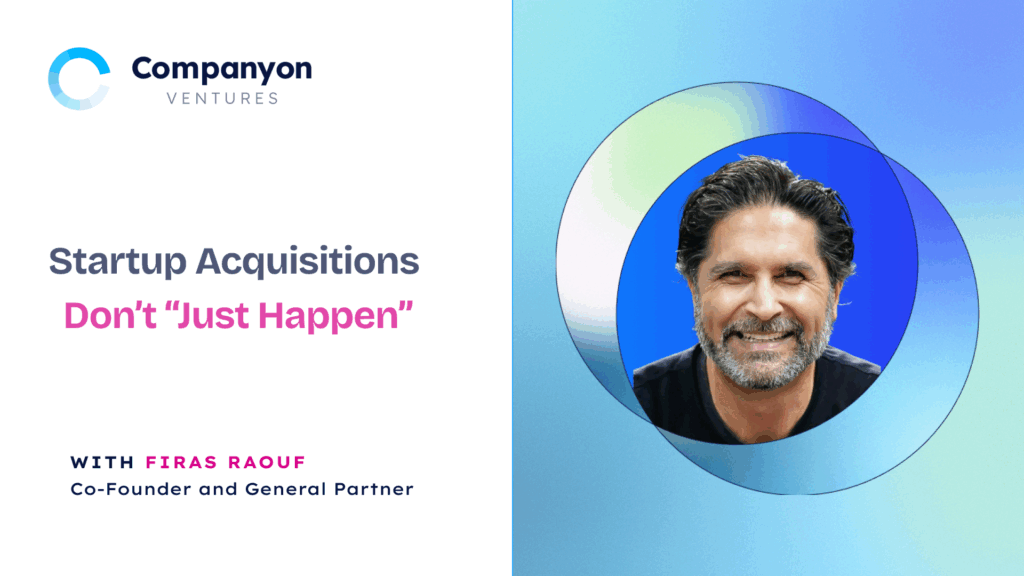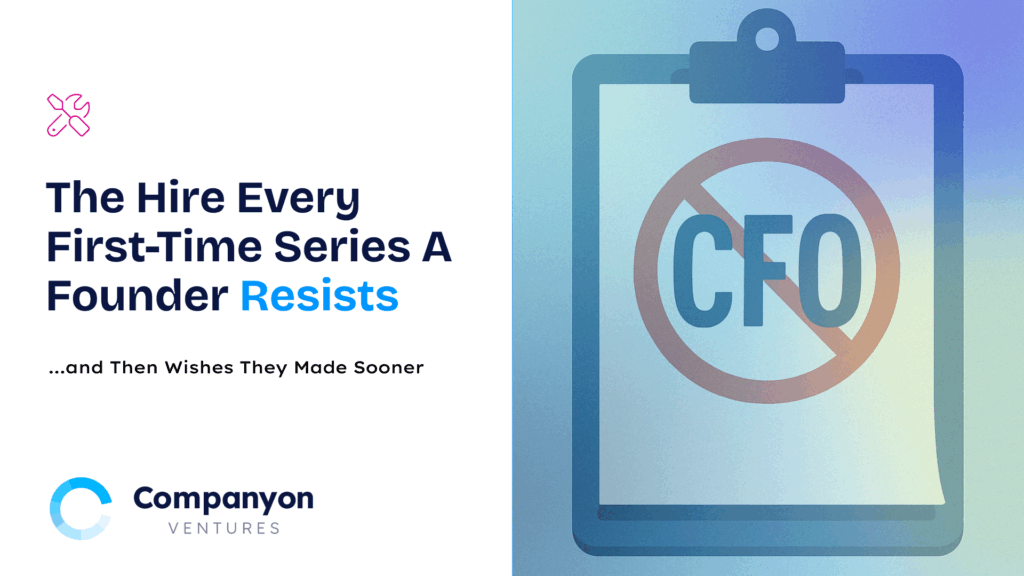

Engineering the Ideal Exit
Use a M&A Banker – Early!
If you’ve read my earlier post Thoughts on Startup Exits, you already know my view: M&A doesn’t “just happen.” It’s engineered—intentionally and over time. So instead of revisiting the why, this post dives into the how: how to engage the right M&A banker early and use that partnership to shape the outcome long before a deal is on the table.
1. Start by Finding the Right Bankers (Early)
Begin by identifying three to five bankers who already understand your market better than you do.
They should know who’s acquired who and why, what multiples are being paid, and which strategics or PE buyers are active in your segment. They should have led more than one of those deals. If they can’t tell you something new about recent transactions, keep looking—you haven’t found the right ones yet.
From there, narrow the field to two finalists. Chemistry matters as much as competence—you’ll be working side-by-side with this person through a long, high-stakes process. Start engaging them 12 months before your target exit window. Keep the relationship informal; tell them you’ll formalize it when you see proof of value—helpful insights, introductions, or early signs of buyer interest.
And be transparent throughout the journey. You owe them that.
2. Partnering Before There’s a Process
A great banker is more than a deal executor—they’re a strategic collaborator.
Early on, they should help you:
- Craft the overarching strategic story: Why your company matters in the broader industry narrative.
- Tailor that story for each acquirer: Customize your message to align with each buyer’s priorities—product gaps, data synergies, or GTM acceleration.
- Map the buyer landscape: Who’s likely to buy, who’s circling, and who might engage through a partnership path.
- Identify the right contacts: The business-unit heads and corp-dev leads worth nurturing now.
Once you’ve built the target list and story, set a monthly cadence with your banker. Compare notes on conversations, share what’s resonating, and update each other on buyer signals. That rhythm keeps the process warm and intentional, without distracting you from operating the business. It’s quiet preparation disguised as relationship building.
When the time comes to run a process, that same banker helps you build a valuation story—not based on your trailing financials, but on the value the acquirer gains from the combination. The best outcomes come when the buyer believes they’re paying for strategic upside, not history.
3. From Outreach to Engagement
At some point, one or more strategics will start to lean in—asking questions that sound less like partnership and more like combination. That’s when you shift from exploration to preparation and formally retain your banker.
- Your banker now orchestrates the process:
- Structures buyer outreach to create competitive tension.
- Manages confidentiality and information flow.
- Advises on timing, sequencing, and data room readiness.
- Keeps you focused on running the business while the process builds heat.
4. Orchestrating the Transaction
Once the process is live, your banker becomes the quarterback. They’re running the field while you stay focused on execution and keeping your story strong in the market. Nothing strengthens your leverage more than hitting numbers while buyers are watching.
A great banker manages the full choreography of the deal:
- Parallel buyer tracks: They keep multiple acquirers engaged at once, ensuring no single buyer drags the timeline or gains undue leverage.
- Process discipline: They run a tight calendar—initial outreach, NDAs, management presentations, IOIs, LOIs, and exclusivity—so everyone is moving in sync and deadlines create pressure, not chaos.
- Information flow: They control what’s shared and when, releasing enough to sustain interest without exposing too much too early.
- Valuation framing: They anchor the buyer conversations around a strategic value narrative, not just financial multiples, reinforcing the “why now” and “why this combination.”
- Negotiation and positioning: They manage feedback loops, compare offers apples-to-apples, and use competitive tension to push valuation, structure, and terms in your favor.
- Coordination with counsel and finance: They sit at the center—synchronizing your legal, tax, and finance advisors so diligence questions are anticipated and resolved fast.
- Founder protection: They buffer you from buyer tactics that try to slow the process or re-trade late in diligence, maintaining focus and morale internally.
Through all this, your job as the founder is simple but critical: keep the business performing, keep your team steady, and keep the story consistent. The combination of execution plus a disciplined, competitive process is what converts interest into premium valuation.
5. Choosing the Banker to Retain
By now, you’ve worked informally with two bankers who’ve both shown up in different ways. The choice of who to retain should be straightforward: pick the one who’s already proven valuable before getting paid.
Ask yourself:
- Who consistently brought you new insights or buyer intelligence?
- Who’s helped sharpen your positioning and outreach strategy?
- Who’s actually closed deals like yours, with buyers that matter to you?
Beyond that, trust your gut. You’re choosing a co-pilot for an emotional, high-stakes journey. Chemistry and trust aren’t soft factors—they’re survival factors.
You’ve now picked your quarterback. One more thing before it’s game time.
6. Structuring the Engagement and Negotiating Fees
For software startups, banker contracts don’t have to be complicated—just fair and aligned. Here’s what’s typical for early-stage SaaS or AI startups in the $10M–$100M exit range:
Exclusivity
A 6-month exclusive mandate is standard. You can extend if real conversations are underway; otherwise, let it expire automatically.
Tail Period
Limit to 12–18 months, tied to a specific list of buyers the banker actually engaged. No open-ended “just in case” tails.
Fees
Most use a modified Lehman structure that steps down with deal size—something like 4% of the first $5M, 3% of the next $5M, 2% beyond $10M, and 1% past $50M. That usually equates to 3–6% total on typical SaaS exits.
A modest retainer ($10–20K/month) is fine—just make it 100% creditable toward the success fee.
Example:
A $50M exit with a 4-3-2-1 structure results in roughly a $2M fee. If the banker’s process lifted valuation by even 10%, they more than paid for themselves.
Expenses & Reporting
Cap reimbursables (around $10K) and require pre-approval above $1K. Set a simple bi-weekly update cadence with active buyer list and next steps.
You’re not hiring a lawyer—you’re hiring leverage. If they’re good and there’s leverage, a banker’s process adds multiples to valuation; their fee is often the cheapest capital you’ll ever deploy.
Closing Thought
Great exits don’t start with a data room—they start with a relationship. The best founders treat bankers as strategic partners long before a deal is in sight. You don’t need to know when you’ll sell; you just need to start the conversation early enough that, when the timing is right, you already have someone who knows your story, your market, and your value better than anyone else. That’s how you engineer an exit—deliberately, proactively, and with the right banker by your side.
See my series of M&A posts:
Our Resources
Get access to free tools to help accelerate your company’s growth, regardless of a future partnership with Companyon—because, we’re here to help.
Our Newsletter
Join our newsletter for helpful guides, expert insights and company updates delivered monthly to your inbox.



 Blog
Blog



